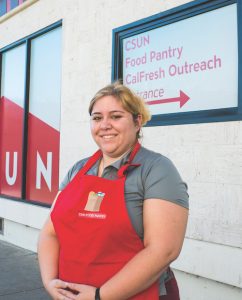Can Homelessness be Solved by Making it Profitable?
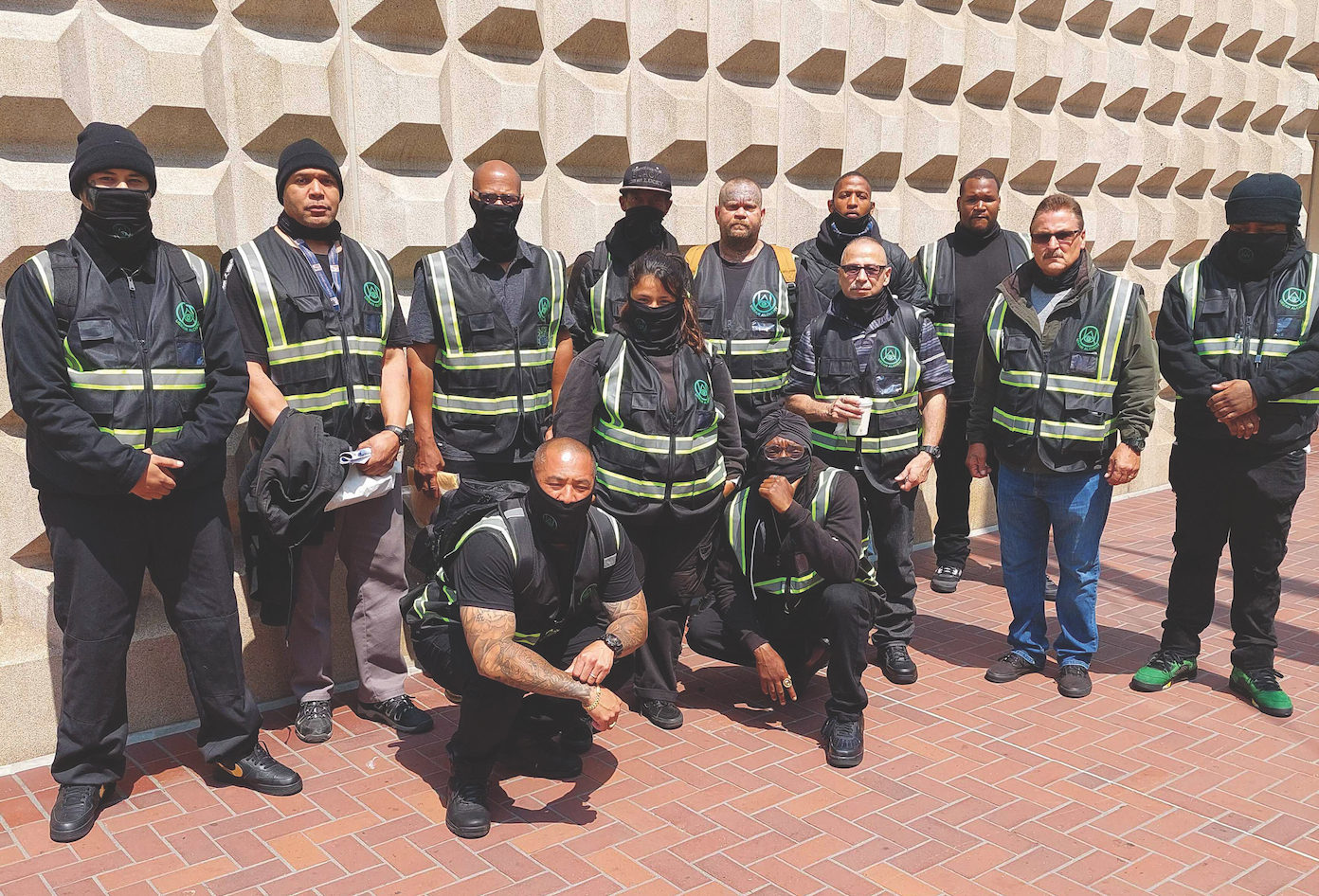
Redeploying charitable foundation investments could be the needed difference in stemming a homegrown humanitarian crisis.
Ricardo Barron just started his shift at the “tiny home village” on a traffic-choked Alvarado Street in Echo Park.
He is sitting at a steel table, an umbrella shielding the already hot L.A. sun. Behind him are 38 neatly spaced 64-square foot shelters. Inside each is a man or woman who has found succor from the ravages of the street. Most are sleeping, it’s early yet.
Nearly three decades before, and about a mile south of here, a then-21-year-old Barron got into an altercation outside of a bar on Echo Park Avenue. Having been shot at 18, Barron carried a gun. He says he tried to shoot into the air to scare his aggressors away, but the bullet found its way into another man. Barron was convicted of murder and spent 20 years in prisons up and down California.
When released in 2014 – at 41 – Barron found his way back to Echo Park, but now a pariah, unable to find work and soon homeless himself.
“Being incarcerated kills your job opportunities,” Barron says. “You feel like you are worthless. My mission is to help get people off the streets, so they aren’t throwaways anymore.”
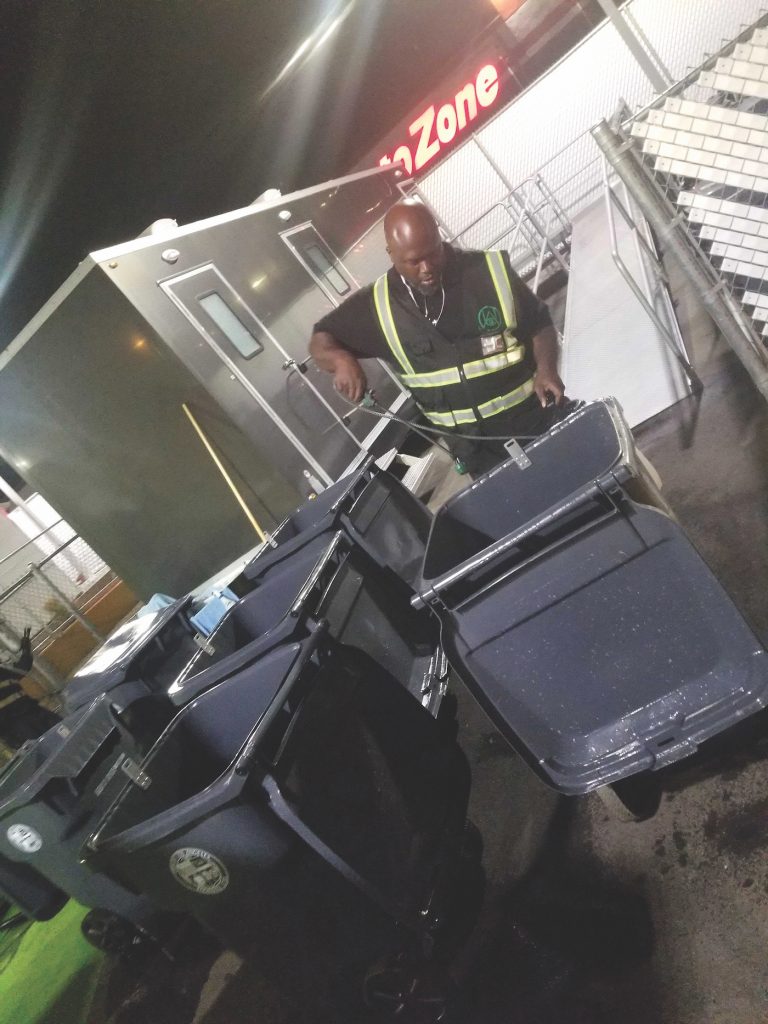
Barron now has a place to live – that he pays for – which he shares with his wife and two children. A true double bottom line.
In the face of the humanitarian crisis playing out across Los Angeles, Barron is an incarnation of hope.
Meeting the challenges of the rolling catastrophe will require the full expression of the power of the government, the nonprofit sector, and importantly, philanthropy.
Government has deployed billions of dollars to the cause. Nonprofits have designed and executed programs to contend with a wildly complex problem, wherein economics, mental health, and substance abuse have left nearly 70,000 Angelenos unhoused.
Despite the combined largesse and acuity of these two actors, homelessness continues to expand. This while a leviathan remains submerged.
The philanthropic sector has also mobilized, but mostly on its traditional footing – through grantmaking. Underneath the 5% that foundations are compelled to give away every year lies a vast underutilized resource: their endowments. In 2018, the latest year comprehensive data is available, the Foundation Center found that L.A.-based corporate, private, and community foundations held $96.7 billion in assets. This is a low-bound estimate given stock gains in the years since. And it doesn’t include the many millions sitting in donor-advised funds administered by private financial institutions.
If one-tenth of that wealth was invested in private development, nearly 73% of L.A.’s entire homeless population could be housed in a studio or one-bedroom unit, and much faster than publicly-funded construction. This while yielding strong returns, backed by the security of existing and expanding government spending.
Notwithstanding the complexity of investing such a sum, these investment vehicles do exist and are growing.
L.A.’s philanthropic sector simply has not expressed its power commensurate with the need. It can, and if it does, be a key player in triumphing over the plainly unacceptable human suffering that we all see every day.
Alchemy
Urban Alchemy depends on ex-cons and the formerly homeless to staff the hardest and often dirtiest jobs associated with homelessness. Eight hundred strong and growing, the “practitioners” as they are called wear all black, their telltale vests emblazoned with the nonprofit’s bright green logo, a U dipping down into an A with a Hamsa-like eye in the middle, where the letters overlap.
“It’s completely untapped labor,” says Urban Alchemy Founder Lena Miller. And critically, a workforce imbued with a “beautiful skillset” honed during frightful years spent in a brutal carceral system. “Being in survival mode develops that emotional intelligence because your survival depends on reading people correctly.”

Miller is rightfully proud of what Urban Alchemy has accomplished, cleaning up Skid Row and San Francisco’s Tenderloin, making sure interim housing sites for people traumatized by the streets like the tiny home village are safe, and staring down the “chaos” all around that most would rather turn away from. “Everything we touch turns to gold,” she says.
That sentiment extends beyond positive outcomes for her employees or the thousands of unhoused people they serve. It can be measured in cold, hard cash.
The nonprofit was founded in 2018. That year, revenue stood at $36,000. The projection for the fiscal year running through June 2022 is $36 million.
That explosive growth is an indication of both the depths of the crisis and the opportunity hidden in the encampments lining our streets.
In its FY22 budget, the City of Los Angeles approved nearly $1 billion in homelessness-related spending, while the county dedicated more than $500 million to the crisis. That doesn’t account for the nearly $600 million in federal Section 8 housing vouchers the city doles out to some 44,000 families each year, or myriad other streams of federal and state funding that touch the problem in some way.
But the wash of government money is neither adequate nor unencumbered enough to meet the incredible challenge facing L.A. and most other large urban centers in his country.
“That’s the tricky thing about solving this problem,” says Andrea Iloulian, the Conrad N. Hilton Foundation’s senior program officer overseeing its $46-million homelessness strategy. “If the community and public leadership think that solving homelessness is the sole responsibility of the homeless service system, we’ll never solve the problem.”
Instead, Iloulian and a growing number of thinkers across philanthropy, finance, and housing development are stacking private capital and the security of government spending to find creative – and in many cases lucrative – answers to the crisis.
What I have learned in interviews with more than two dozen top minds across these sectors is that helping the unhoused can be a very good investment, and one that often isn’t all that risky. And there is capital to do just that.
Philanthropic Capital
Philanthropy’s coordinated response to homelessness here is clearest in the formation of the Home for Good Funders Collaborative in 2011. Fueled by an initial $1 million grant from the Hilton Foundation and housed within the United Way, the collaborative was and is a collective impact initiative aimed at ending homelessness in Los Angeles.
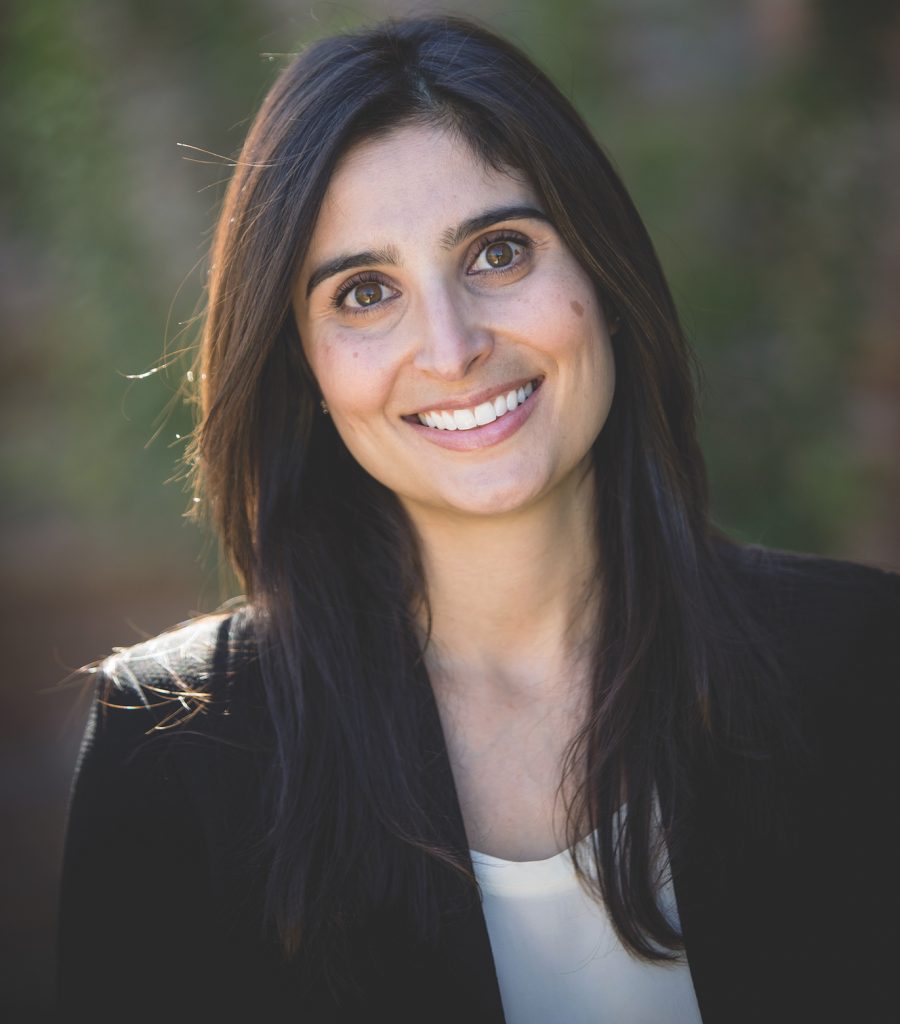
It is credited with seeding the county’s Coordinated Entry System, which triages homeless people touched by the region’s vast array of service providers, helping connect them with housing.
The funder collaborative’s work has been critical for both unlocking grant dollars and laying the groundwork for major public investments, including the 2016 passage of $1.2 billion Proposition HHH, which partially subsidized the development of 10,000 housing units for homeless Angelenos, the majority of which won’t be occupied until well after 2023.
But when it comes to philanthropy’s investment, there is a lot left on the table.
This is – in part – structural. In 1976, Congress tightened the Tax Reform Act, creating the “five percent rule,” which compels foundations to grant 5% of total assets annually.
“The majority of philanthropic capital is sitting in banks or invested in Wall Street,” says Edgar Villanueva, author of Decolonizing Wealth: Indigenous Wisdom to Heal Divides and Restore Balance. “It’s a sad thing that there had to be an act of Congress to force foundations to actually give money to the community. Donors do a little bit of good with that 5% that goes to the community, but the vast majority of the wealth is often not aligned with the mission.”
By mission alignment, Villanueva simply means that a foundation’s investments should be in sync with its mission. So, if you fund criminal justice reform, investments in private prisons would be a no-no.
Despite the obvious synergy of such strategies for organizations established to benefit the public, only 18% of small to midsize foundations surveyed by Exponent Philanthropy in 2021 engaged in impact or mission-aligned investing.
And while there is a national movement afoot within philanthropy to change how foundations invest their endowments, the practice is far from ubiquitous.
Of the major local charitable foundations that make up the Home for Good Funders Collaborative, many are likely engaged in some mission alignment, but the Weingart Foundation’s commitment to align its entire corpus stands out.
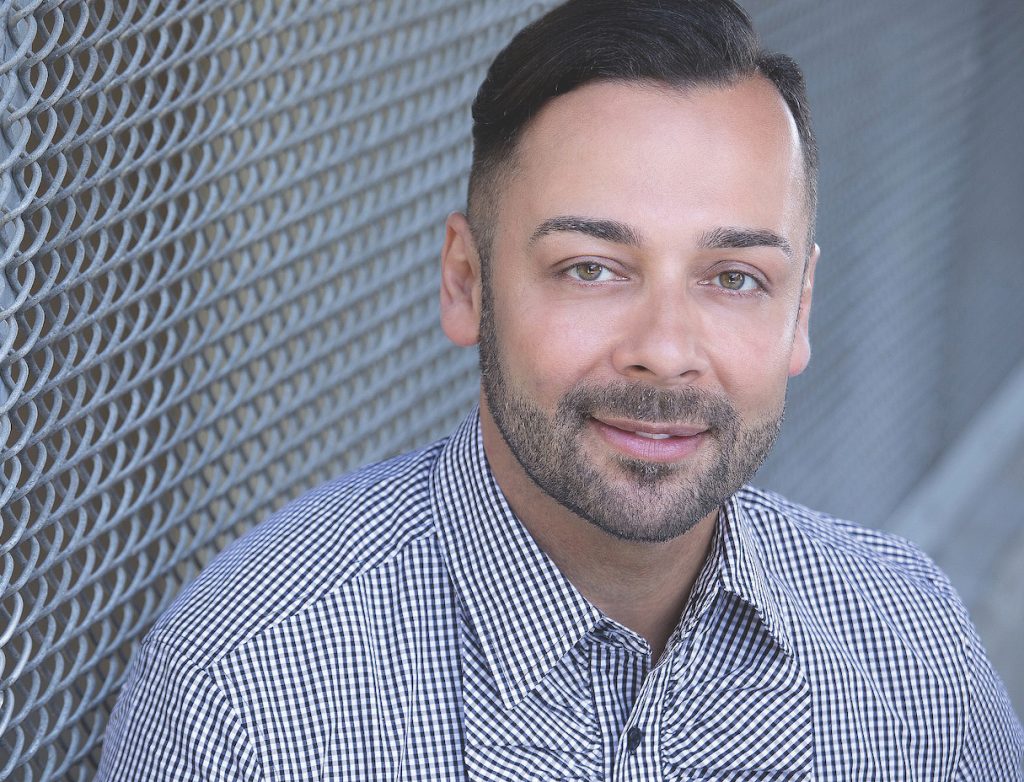
Tim Ortez is Weingart’s vice president and chief financial officer, overseeing the foundation’s $936 million endowment. For Ortez, a rare Latino face among foundation CFOs, the foundation’s strategy to invest in Black and Brown communities is about “correcting some of the imbalances that have accumulated over time and history.”
Of the 34 foundations that make up the Home for Good Funders Collaborative, I tallied the available financials of 15 based here in Los Angeles. Combined, their endowments stand at roughly $15.8 billion.
Going deeper, the average foundation’s assets are broken into three predominant classes: equities (largely stock), fixed income (largely Treasury bonds), and alternative strategies, ranging from hedge funds to real estate. While private and community foundations behaved differently in 2020, both were heavily invested in equities or alternative strategies: 88% for private foundations and 81% for community foundations, according to a 2021 National Council on Foundations’ report.
The remainder is predominantly devoted to Treasury bonds, which act as a ballast to equity positions exposed in a down market and to ensure liquidity.
Real estate investments designed to house the unhoused are often backed by the security of government-subsidized rental assistance – among other streams. And even with nonprofit organizations like Urban Alchemy, there is security in the government contracts they assemble, and margins baked into those contracts.
What I am suggesting is that there exists the opportunity to include meaningful allocations to these types of exposure within philanthropic equity portfolios that can yield acceptable returns with acceptable risk. And that this alternative investment strategy could change the face of homelessness in L.A. and across the country.
Let’s start small by carving out 10% from the corpora of the 15 foundations above. The total – $1.58 billion – eclipses the sum dedicated to building permanent supportive housing in Proposition HHH.
That investment alone would – at $200,000 per unit – produce 8,530 units, housing nearly 13% of L.A. County’s 66,436 unsheltered people, according to the latest count from 2020. If you added development of dorm-like housing, which can be done with modular construction, even repurposed shipping containers, for as little as $100,000 a door – you could house even more people.
Now imagine if all L.A.’s foundations stepped up in this way.
Government-Backed Security
I am sitting at a press conference on the top of a new five-story development in the heart of South Los Angeles. All the residents here have experienced homelessness and are paying their rent with government-issued vouchers.
From here you can see downtown L.A. with the San Gabriel Mountains rising behind, and somewhere over my shoulder, past the steady sprawl, the Pacific.
Local City Council Member Curren Price is at the podium. He points to the “unique and powerful partnerships” that made this happen and thanks the impact investing firm, SDS Capital Group, that is financing this and an additional 34 similar projects. In five years, SDS developments will house 1,800 people across California, including 1,200 here in Los Angeles. “Everyone knows that nothing happens without the capital,” Price says. The assembled chuckle.
Next to take the mic is Kush Simpson, a Maryland-born, 72-year-old resident who spent decades in and out of prison and living on the streets as he battled deep drug addiction. For him, escape from that harsh, unforgiving life came through his art – collages – that let him express the world that he wanted to see.
“This is not an ending,” he says of his one-bedroom apartment three floors below, “but the opportunity for a new beginning.”
As Simpson sees it, housing is a stepping stone. When he moves on, his space will open up for someone who needs it more.
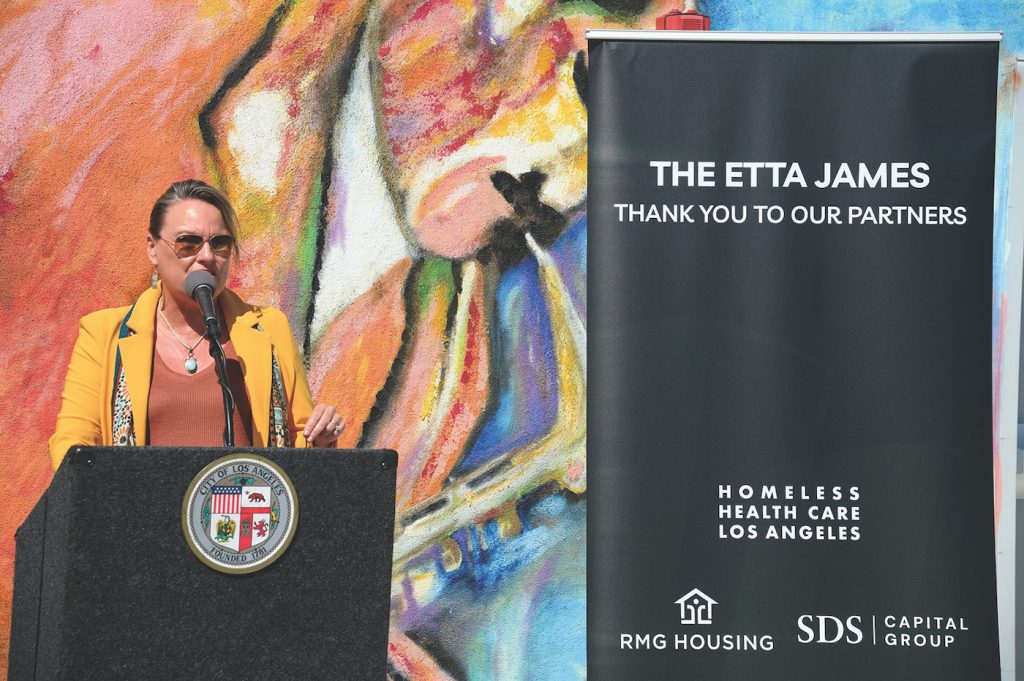

Unlike the typical supportive housing procured by the city and county of Los Angeles at costs of $500,000 or even $700,000 a unit, The Etta James, as this building is called, was built for roughly $200,000 a door. Because the developments in the fund are underwritten with purely private capital, they can be completed, start to finish, in as little as 24 months. The nonprofit Homeless Healthcare Los Angeles provides case management for all the tenants.
For Debbie La Franchi, SDS’ founder and CEO, it’s deals like this that got her to leave the public sector two decades before. La Franchi was an assistant deputy mayor for Los Angeles Mayor Richard Riordan, before becoming the first CEO of Genesis LA, one of the city’s leading community development financial institutions (CDFI). There she raised $85 million to “engage in the fight against poverty.”
“I realized, wow, I am going to focus my work on enlisting the private sector,” she says. “Because you need more than the government and nonprofit sector, otherwise you’re just not operating on all cylinders.”
By the time of publication, SDS’ Supportive Housing Fund – which fueled the Etta James – had closed its $150 million target. Kaiser Permanente was the largest investor at $50 million, alongside a slew of local banks. While most of the capital came from outside the philanthropic sector, the Annenberg, California Community and Weingart Foundations did invest.
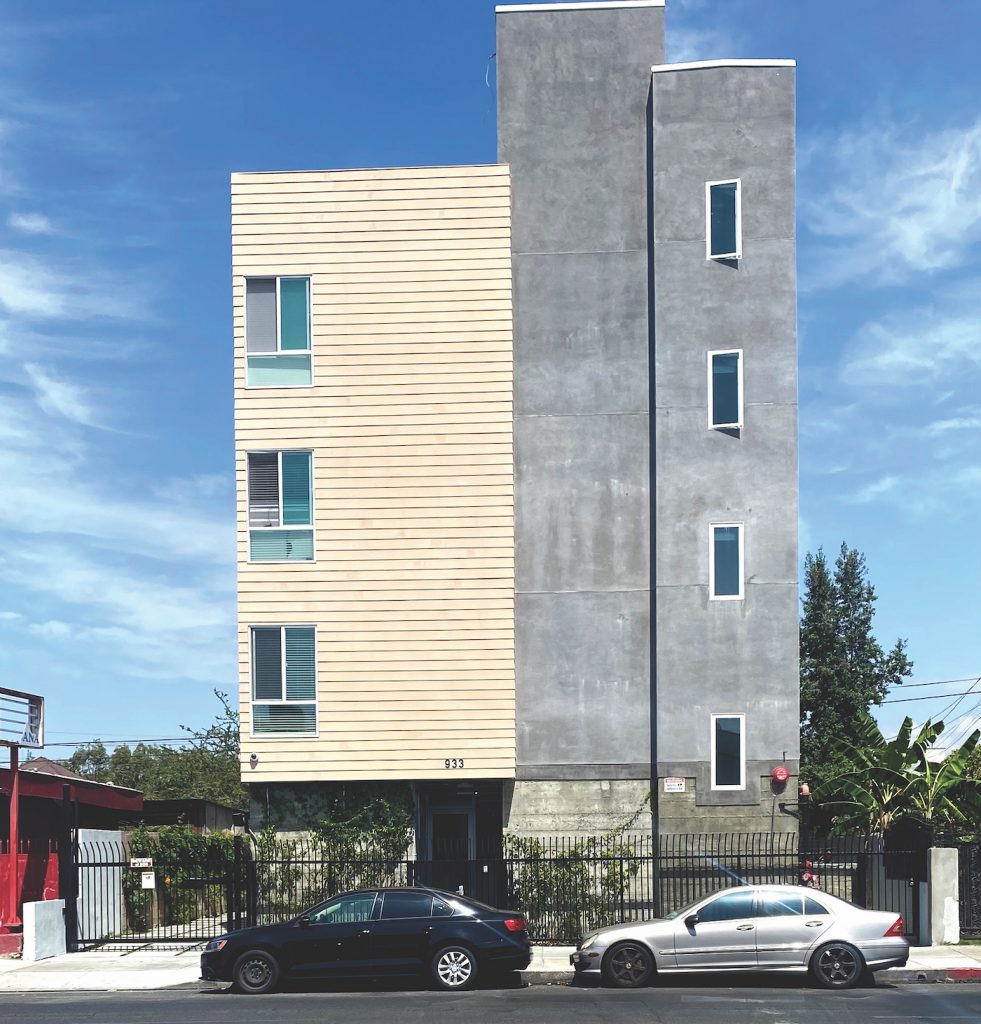
For Weingart’s Ortez, the $5 million investment penciled out. The return that SDS offered gelled nicely with his 8% annual target. It also didn’t hurt that the fund’s reliance on housing vouchers creates a secured, near recession-proof revenue source.
SDS isn’t the only housing-focused venture that Weingart is considering.
SoLa Impact is a real estate investment firm that does most of its work in South Los Angeles, where it manages 1,500 apartments. Half house tenants subsidized by vouchers, and 60% of all residents have experienced homelessness. The firm has another 1,300 units in the pipeline, which range from $225,000 to $250,000 per unit to build.
“This is a grand experiment on how you can approach capitalism differently,” says CEO Martin Muoto. “Some call it compassionate capitalism, but I just call it common sense.
“I hope that corporations and investment and asset managers are either inspired or embarrassed. Inspired because people can do this. Embarrassed because they said it couldn’t be done and we are doing it.”
Despite the interest from Weingart, Muoto says it has been slow going getting other charitable foundations to invest.
“It has taken a lot of work to educate the foundation world,” Muoto says. “In some respects, I am a little surprised. They have a fiduciary duty to look at returns after all.”
Like Muoto, Jennifer Kenning, co-founder and CEO of Align Impact, has seen a disconnect between foundations’ efforts to fight homelessness and how they guide their investments.
“They haven’t yet connected that to eradicate homelessness we need safe, secure, and affordable housing, which would require an investment in real estate rather than a traditional grant,” Kenning says. “They are also focused on wrap-around solutions rather than taking a comprehensive approach and using multiple forms of capital to address the problem.
The Capital Stack
Sometimes called patient capital, charitable foundations can offer low-yield loans – often 10-year terms – to projects that lure in other, more returns-driven investors.
An example is Just in Reach, a $10 million “social impact bond” that marries private investment with public services. The program’s goal is to push down recidivism rates by housing people at high risk of becoming homeless the moment they are released from jail. If successful, the county pays back investors, with interest.
Keeping people out of costly jail beds creates “bankable savings” for the county, according to Gary Painter, director of the Sol Price Center for Social Innovation and the Homelessness Policy Research Institute, housed at USC.
The Hilton Foundation used Program Related Investment (PRI) dollars drawn from its grantmaking portfolio to make two loans of $1.5 million, one for 2% and the other for 0%. These low rates ensured that the $7 million UnitedHealth invested would yield 5% if Just in Reach was a success. Just in Reach’s “innovation” was in the “stacking of capital,” Painter says.
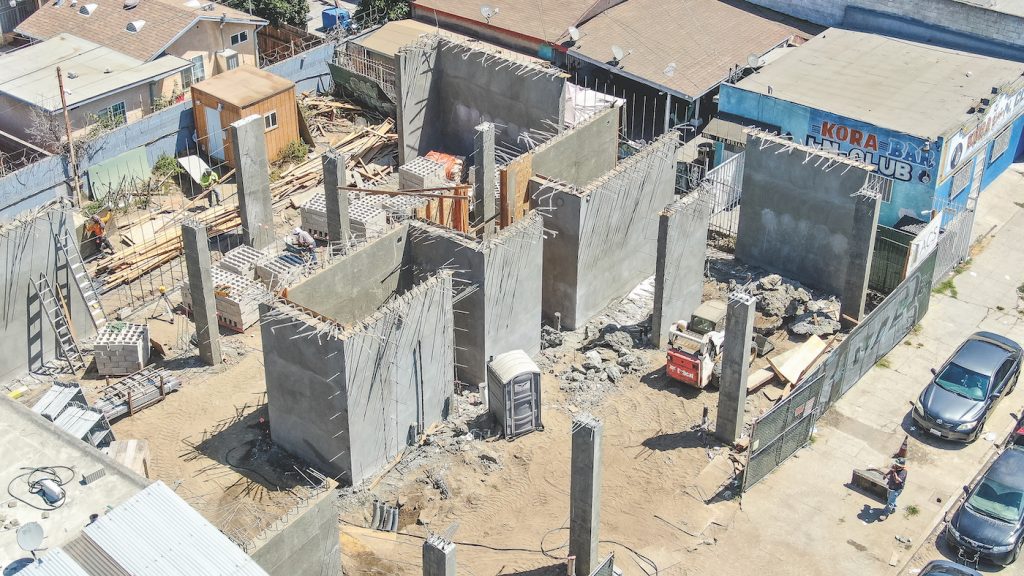
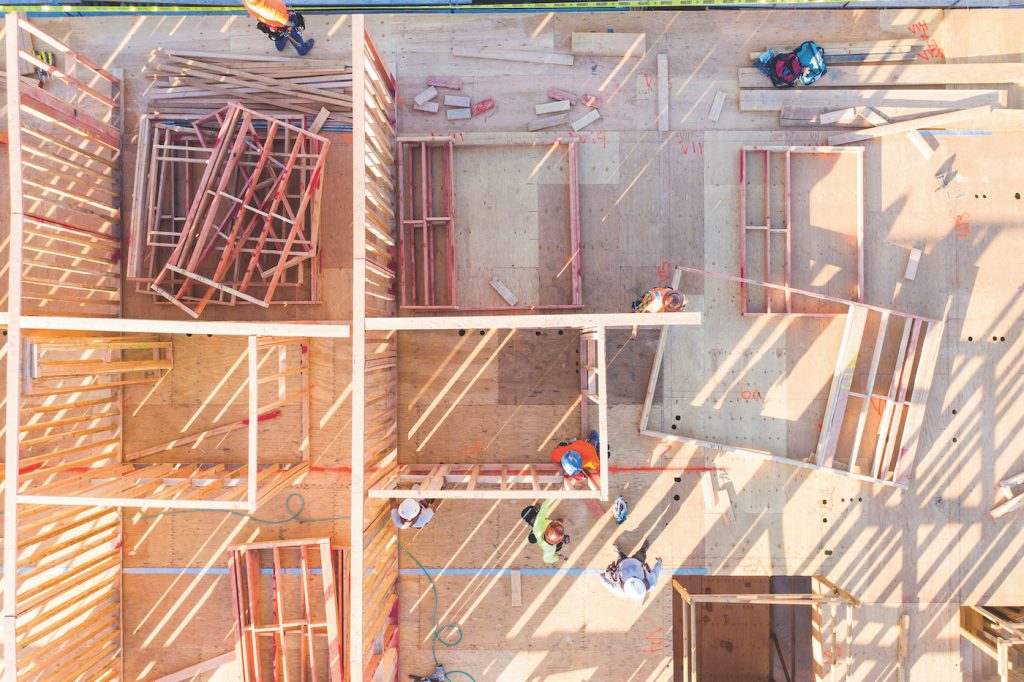
Hilton’s Andrea Iloulian says the initiative will “show program success.” But more than the return on investment, she is focused on the county latching “onto that program success and making the program changes permanent.”
“We’re not interested in using our PRIs for return when they come out of our grantmaking budget; we’re interested in using them for maximum impact,” Iloulian says.
But impact need not deny returns.
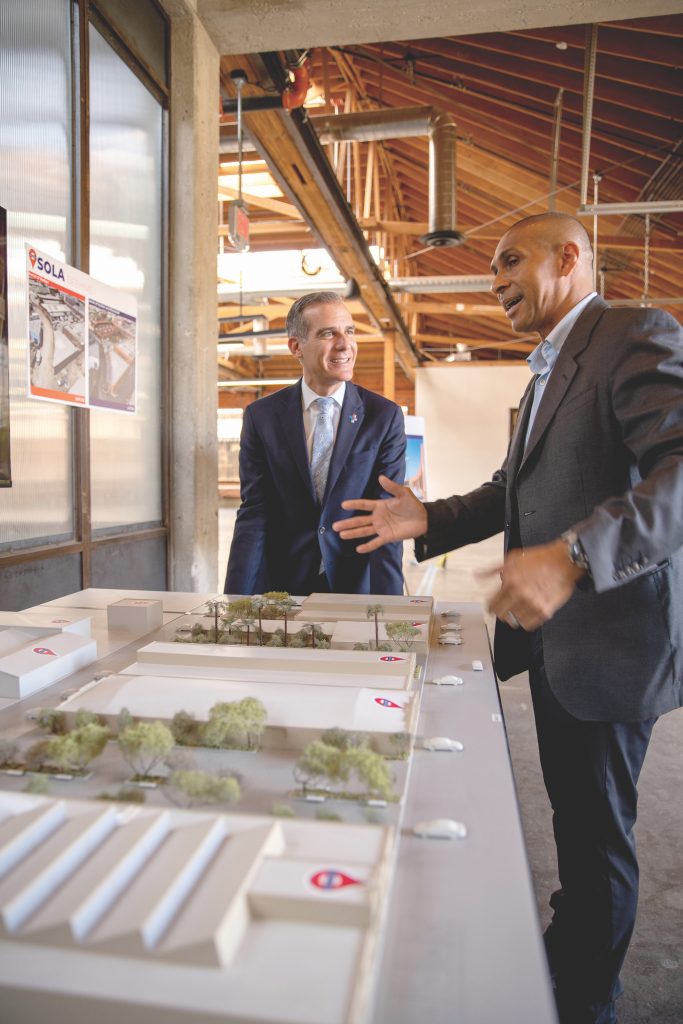
Signed by President Bill Clinton in 1994, the Riegle Community Development and Regulatory Improvement Act pumped federal grant dollars into CDFIs like Genesis LA, creating an equity base these financial institutions leverage to offer affordable loans. Coupled with the Community Reinvestment Act, which compels banks to invest in low- and moderate-income communities, CDFIs have become a linchpin of affordable housing development nationwide. They have also become a vehicle for charitable foundations that want to safely invest in affordable housing, while preserving capital and earning modest returns.
Today, Genesis LA, the same CDFI that La Franchi launched in 1998, is run by President and CEO Tom De Simone.
While De Simone is grateful about “historic levels” of county, state, and federal funds being devoted to building housing, he is dismayed by the strings attached. “We’ve created this byzantine process that just adds so much delay and higher costs.” To get a supportive housing project off the ground, developers typically apply to as many as six government funding streams delaying construction for years and driving costs skyward.
“The government should be funding the demand side of housing as opposed to the supply side,” De Simone says. “Let the private sector build the units, and the government can buy the units outright or provide permanent rent.”
In 2014, Los Angeles County Health Services launched – unsurprisingly with Hilton – the Flexible Housing Subsidy Pool, which has made housing possible for thousands of homeless people. The pool provides case management and, importantly, rental subsidies, which have been used to leverage the financing of construction projects.
In response to the pandemic, the state launched Project Homekey, wherein grants were offered to local public entities to buy housing units, whether in motels or in vacant apartment buildings. Within a year of its launch, the program had snatched up 6,000 affordable housing units, according to Gov. Gavin Newsom’s office, illustrating what the government can do when it switches to the demand side.
And on the federal level, the earned income child tax credit, expanded food stamp allocations, and calls for a dramatic increase in rental vouchers are examples of programs that aim to keep poor people – many on the edge of economic homelessness – above water.
While there isn’t an endless supply of rental assistance or other government funds, these shifts portend growing opportunities to match public spending with private capital.
The Crisis Demands More than Housing
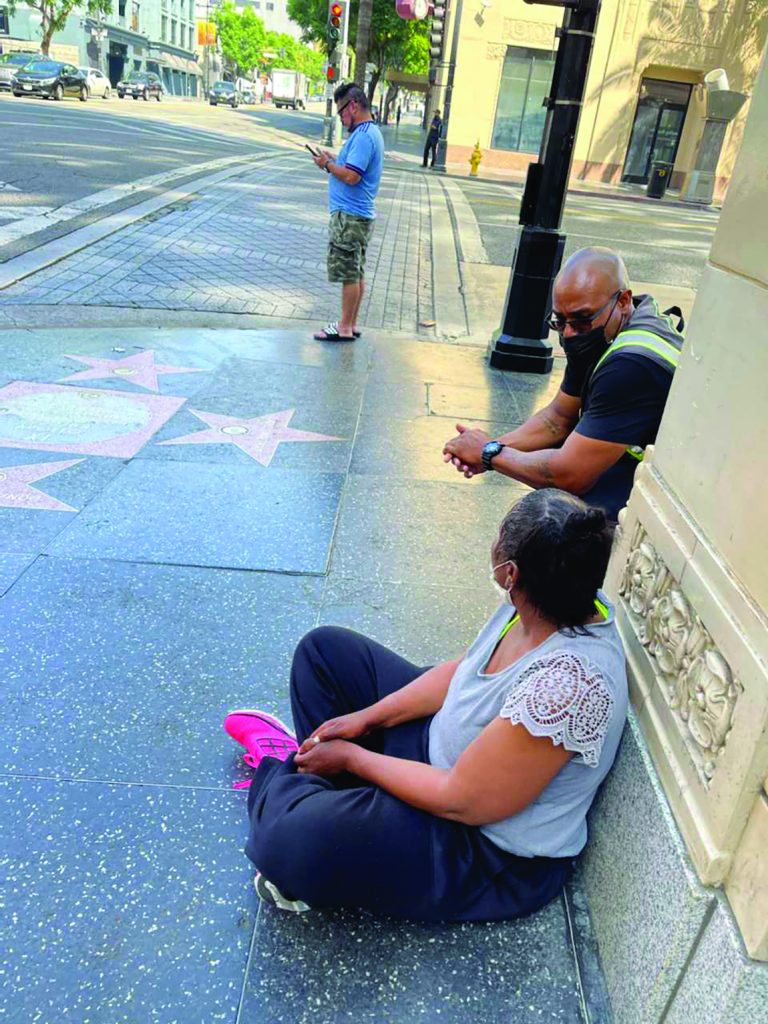
Beyond housing, philanthropic capital has another important role to play. While nearly two-thirds of L.A.’s unhoused reported being homeless for the first time in the latest count, many are there for more than economic reasons alone. Deep mental health issues and substance abuse conspire to leave a large part of the homeless population in need of a wide array of services, which can also, counterintuitively, translate into solid investments.
Carrie McKellogg leads REDF’s Impact Investing Fund, which blends low-interest PRIs and grants from charitable foundations to underwrite short and midterm loans for for-profits and nonprofits, primarily employment organizations like Urban Alchemy.
“Staffing organizations have the potential for both safe and stable returns,” McKellogg says. It’s all about understanding those organizations’ government contracts and how well they are billing and getting reimbursed in a timely manner. “The fundamental business model has margins built in.”
The downside is that public agency reimbursement can take anywhere from 30 to 60 days, creating cash flow nightmares. With millions in payroll, Urban Alchemy faces this problem every month.
When I catch McKellogg on the phone, she is diligencing a 12-month, $500,000 line of credit to Urban Alchemy at 6-8% interest. The impact lending practice can do this because it is recycling 10-year program related investments from charitable foundations that typically expect a 3% return. “Good, solid, patient money,” McKellogg calls it.
As a nonprofit, REDF uses the margins to offset the cost of providing technical assistance to its borrowers, helping the Urban Alchemy’s of the world become financially stable and adept, putting them on a path to scale.
Eyes Wide Open

I often work out of an office at the intersection of Vine and Selma streets in Hollywood. It is, like so many of this city’s corners, a raw place when you decide to look.
On the southwest corner stands a narrow tent with a blue tarp draped over it. Inside lives a young woman. A few yards from where she has made her home, I saw a young, wild-eyed man land two punches to the face of another man before a security guard moved him along.
On the southeast corner, a new luxury-style apartment development looms, with an Equinox gym in its belly.
A Trader Joe’s dominates the northeast corner. An apparently unhoused man is camped near the door, always sitting on a beach chair, a large plastic cup of dollars and change in his hands. A few yards south, another man sits behind a table proffering psychedelic mushrooms, marijuana, and other paraphernalia.
And those are just the everyday citizens. The intersection is frequented by the unhoused, many of them clearly suffering.
It is late in the afternoon. The sun dances off the glass towers, gleaming, giving the confluence of Vine and Selma a goldish glow.
I look up and see a small battalion of men and women in all black, wearing those telltale Urban Alchemy vests. I stop one young man with dreads past his shoulders and ask him how he likes working for the organization.
With a smile, he says he just started, but yeah, he likes it a lot. I’m sure he’s got a good story.
His co-workers are now halfway across Vine, moving in the direction of Trader Joe’s. He jogs over to join them.
In this place, in this crisis, I feel hope.
